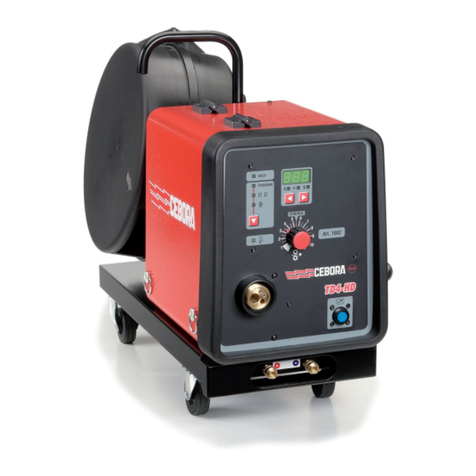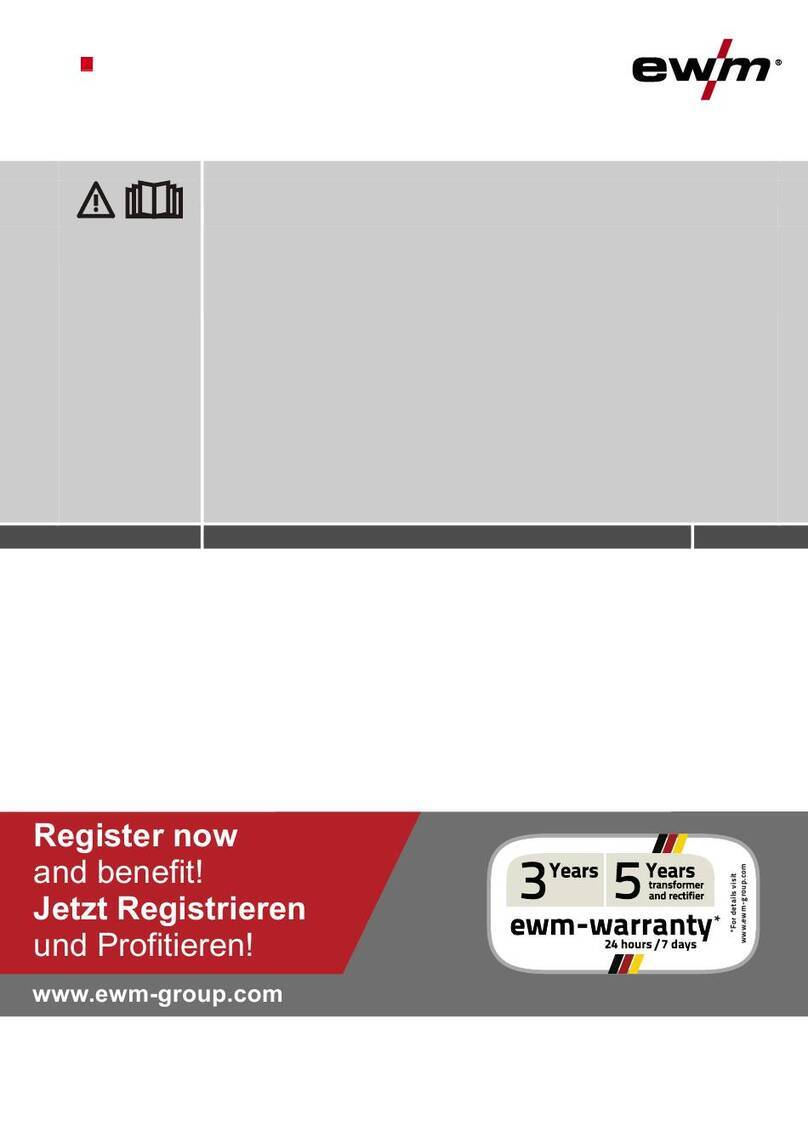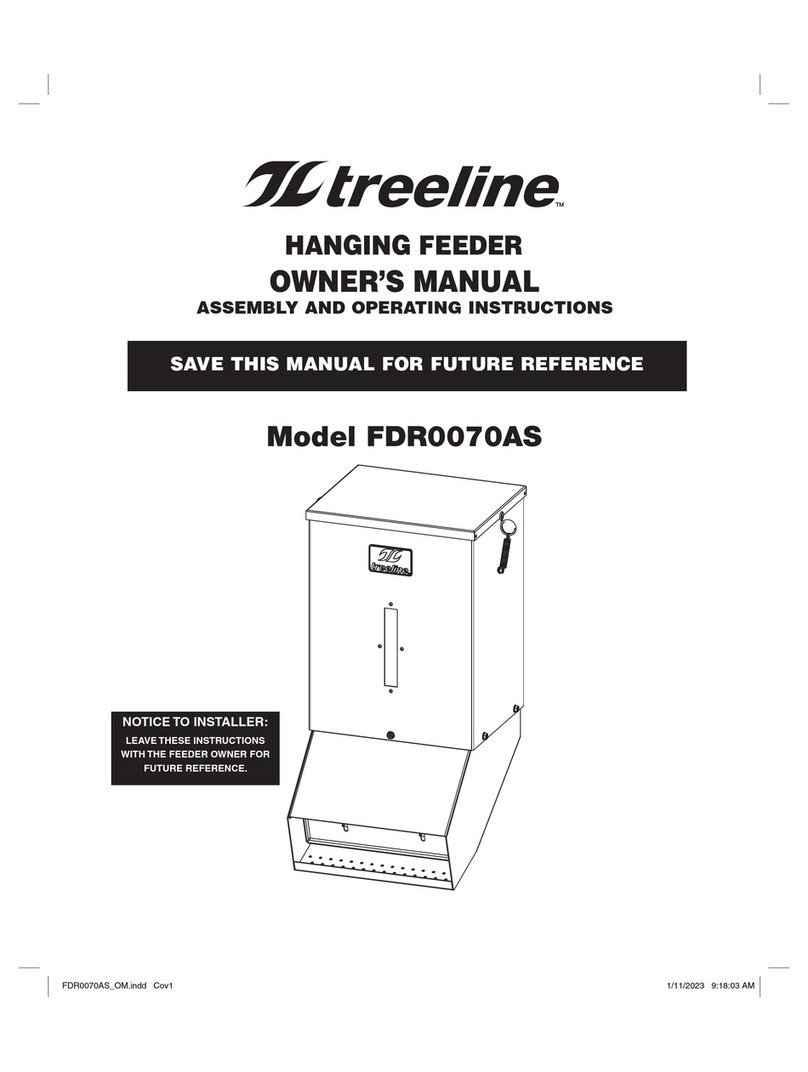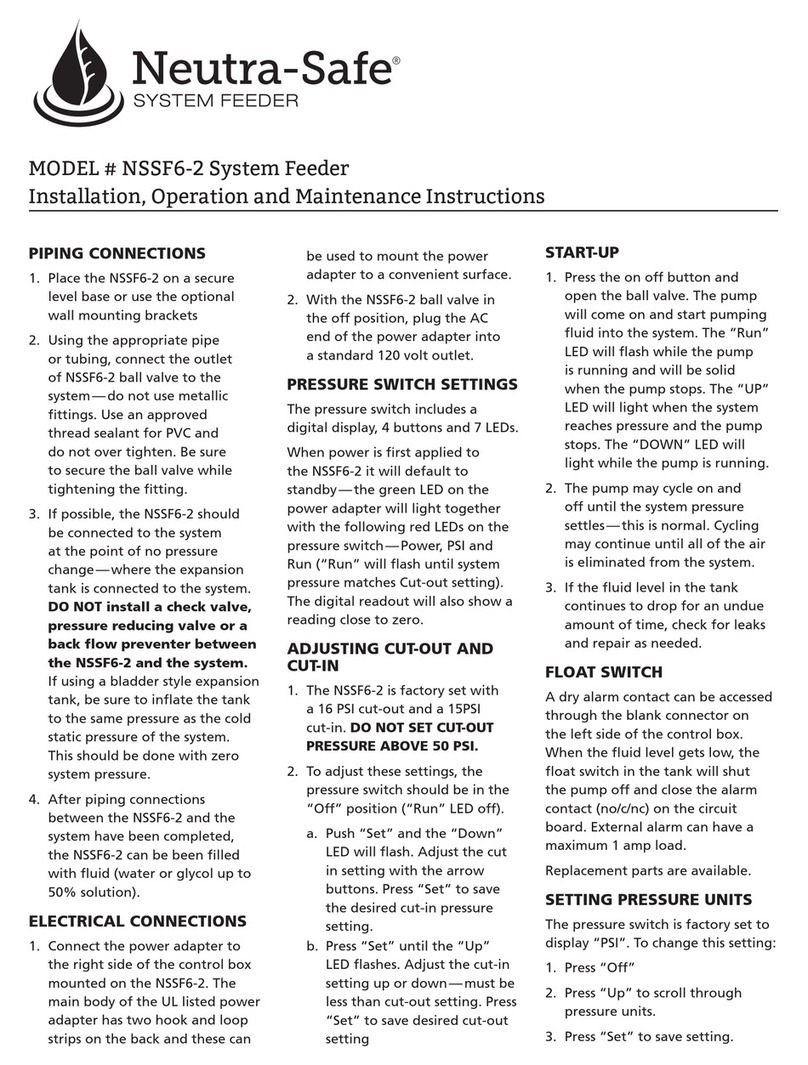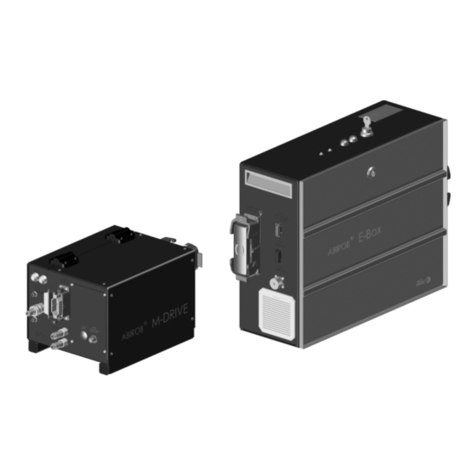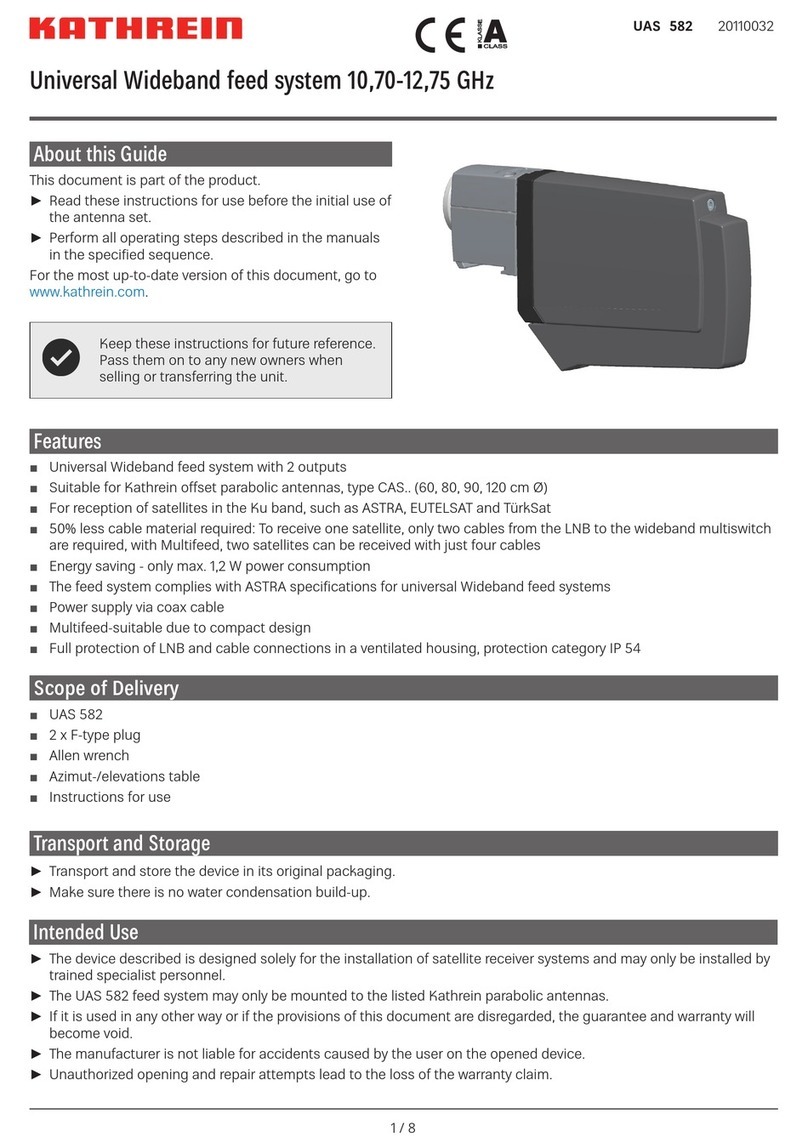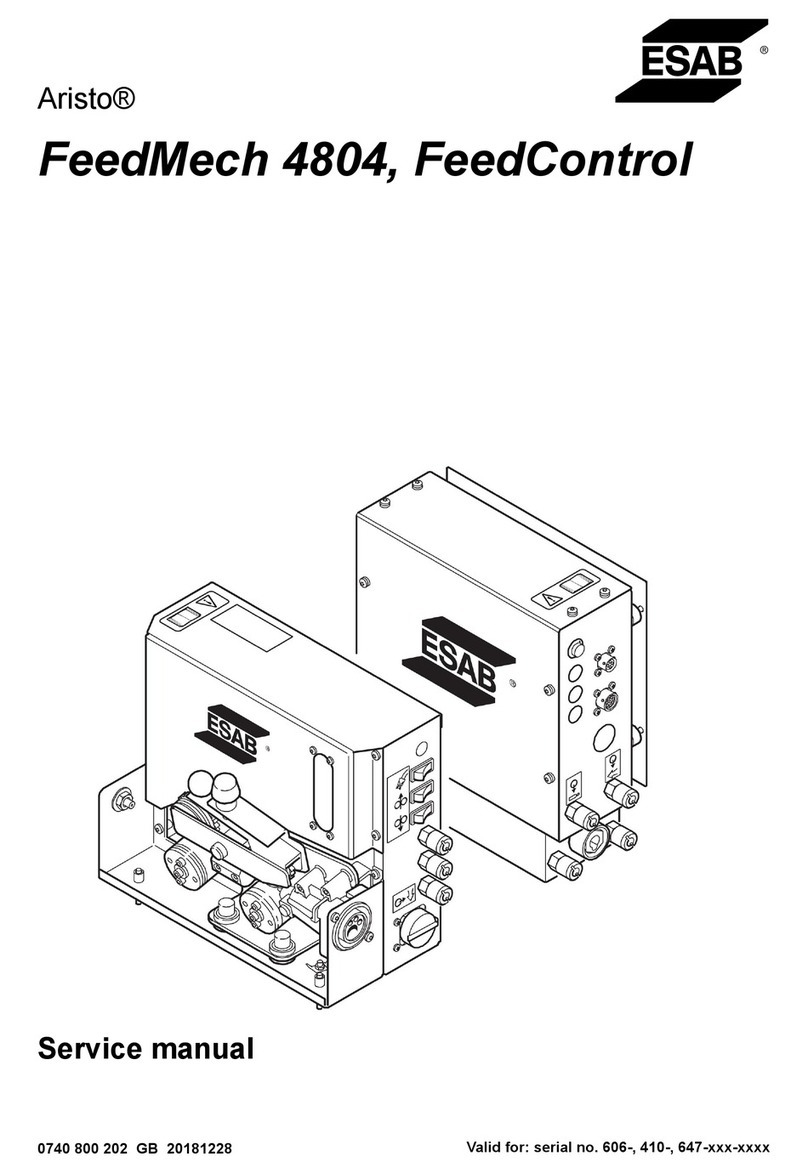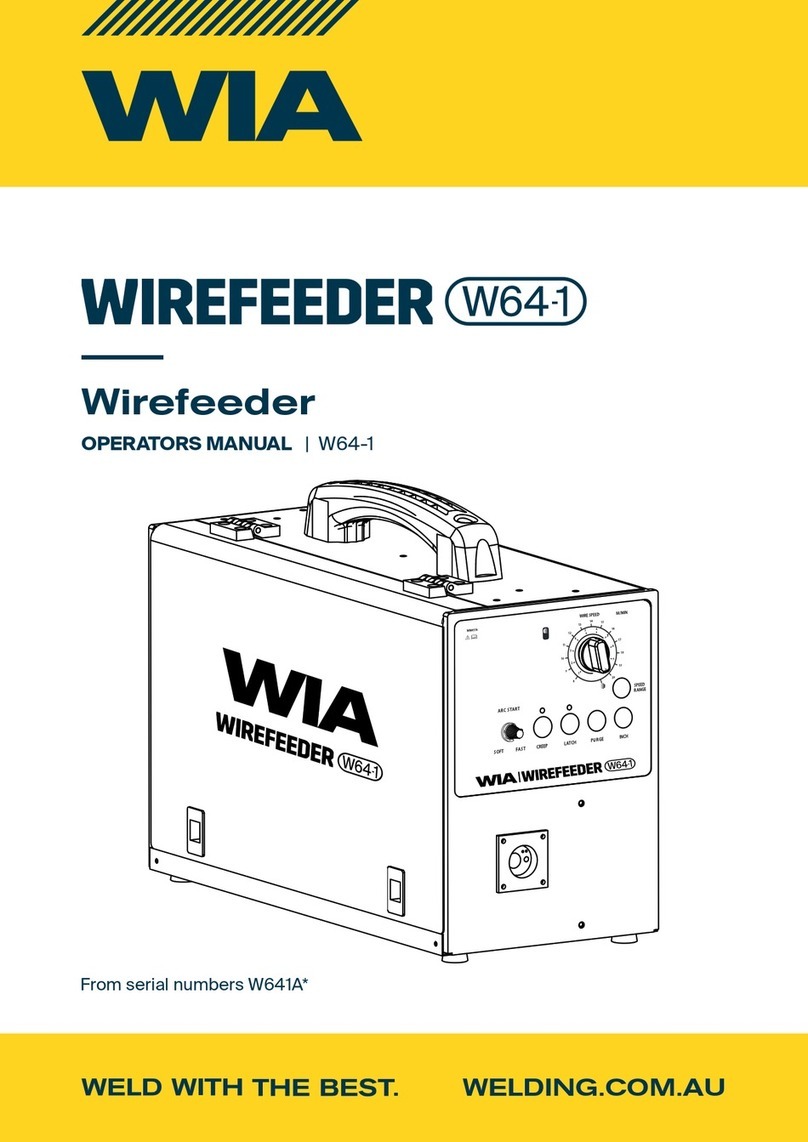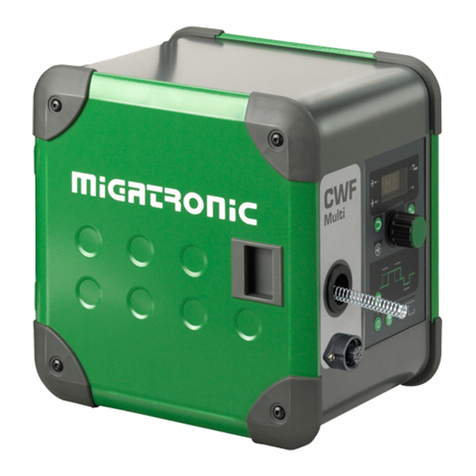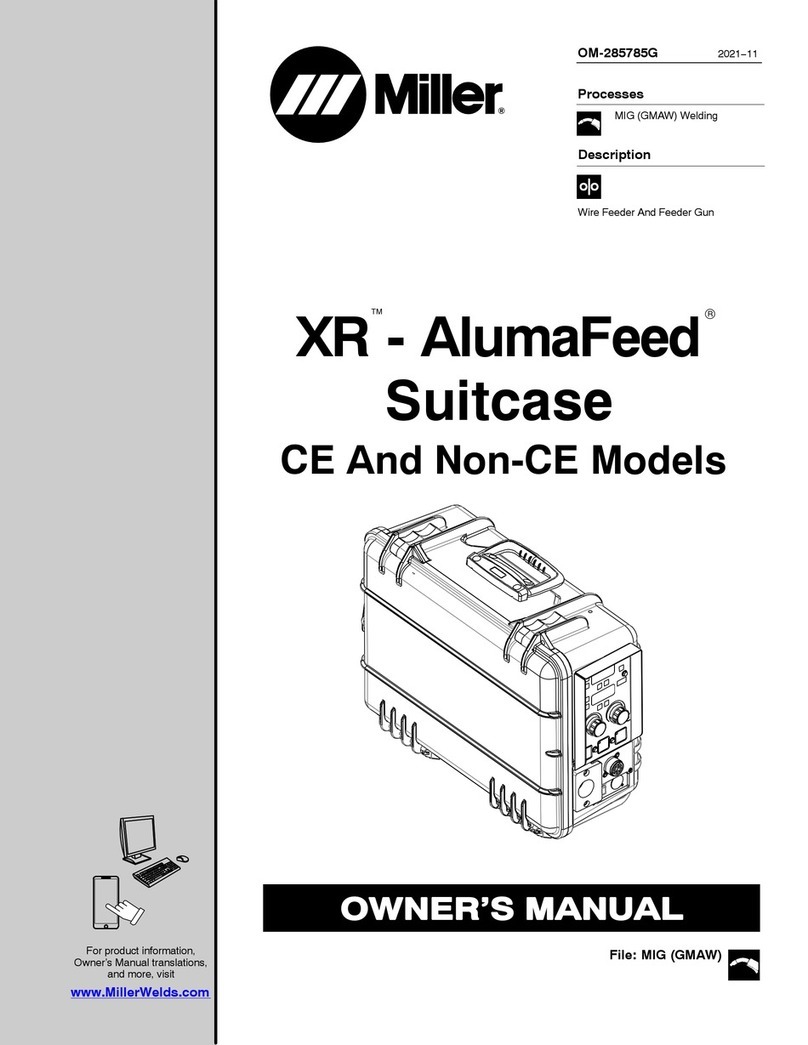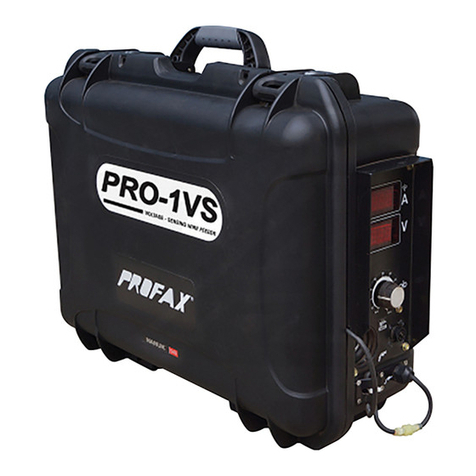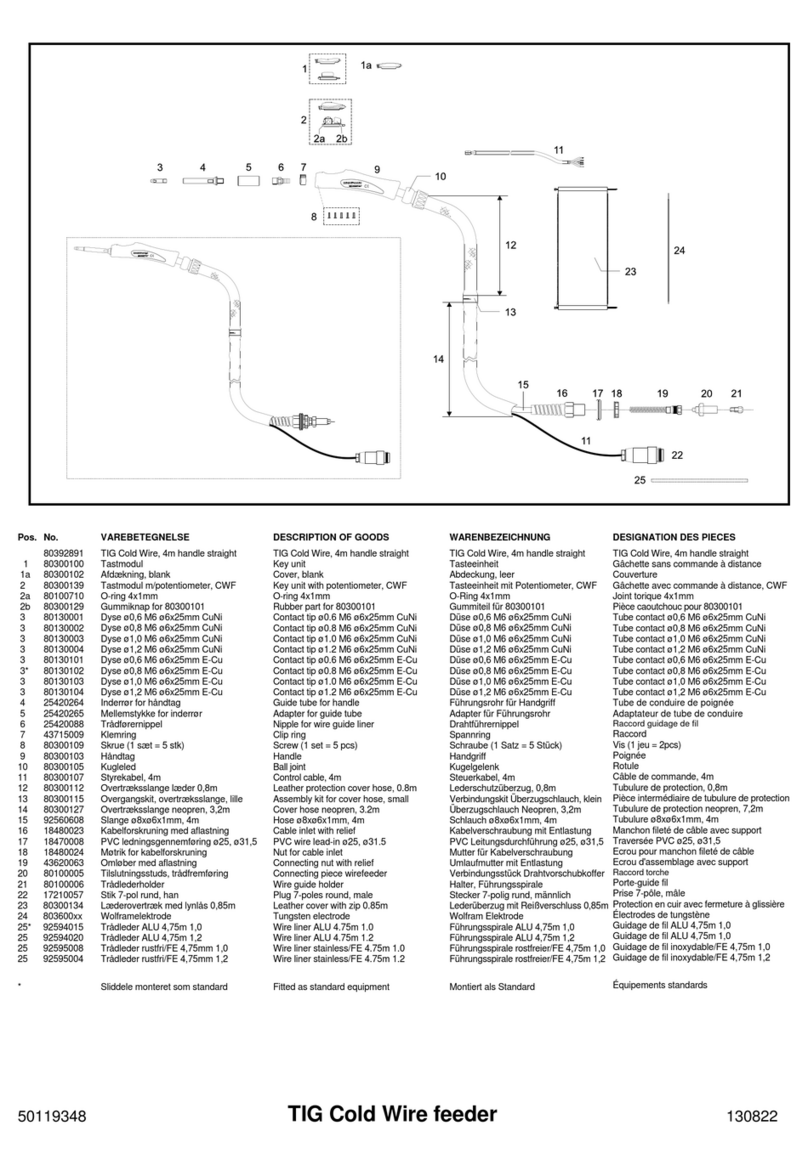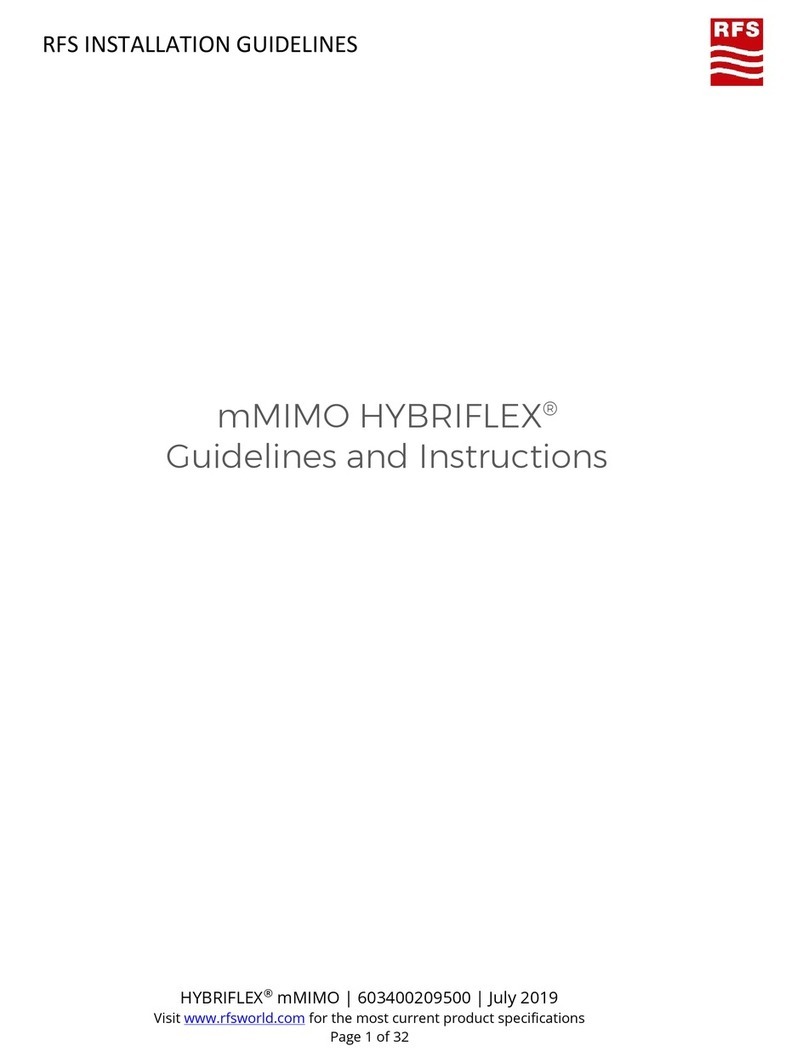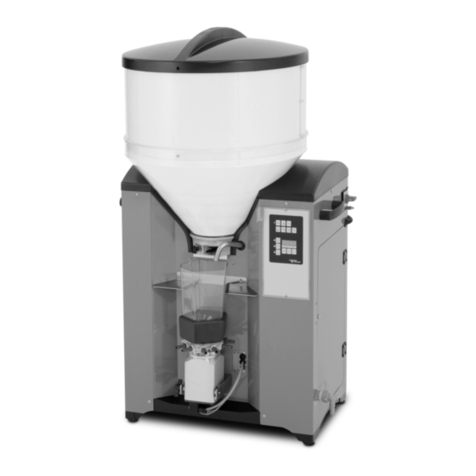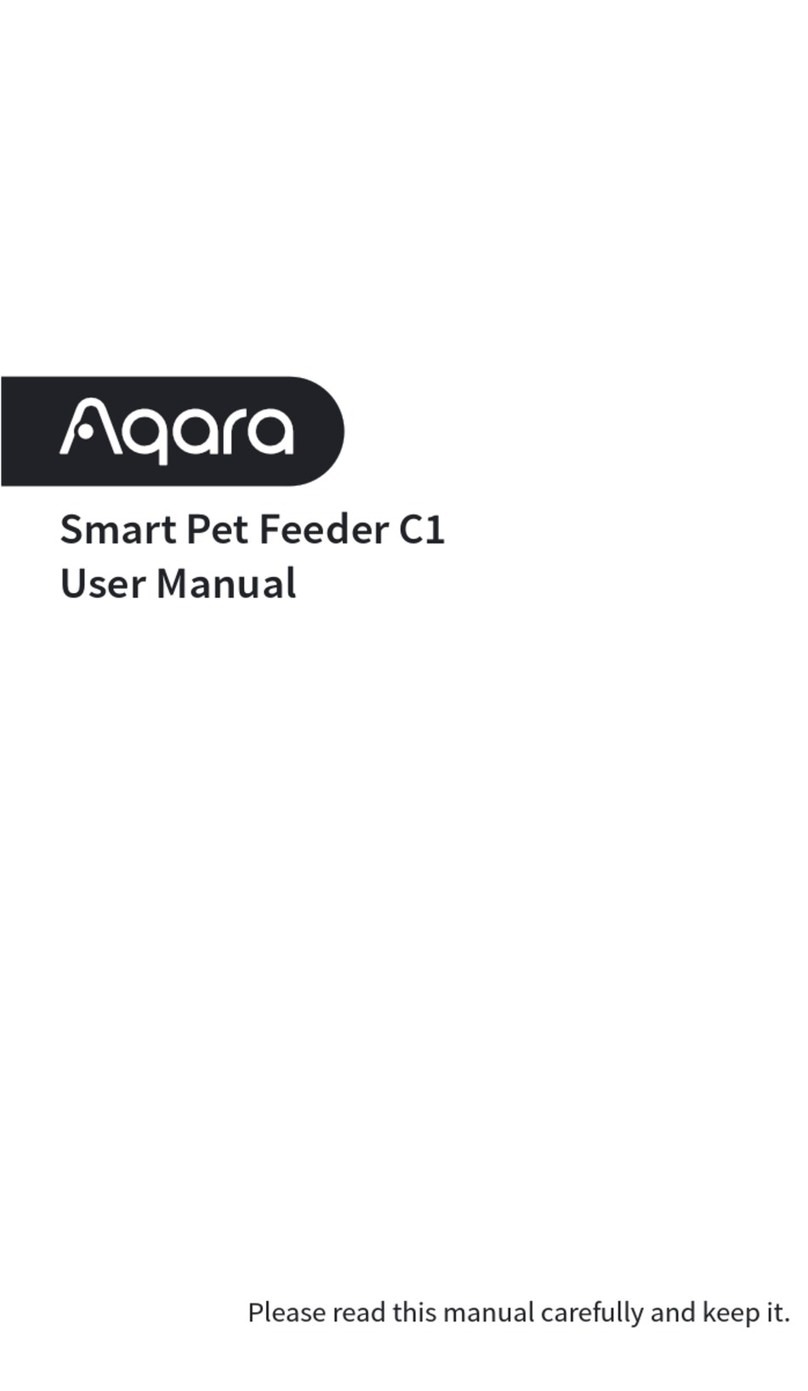
- 6 -
Safety precautions
06.13
3 Safety precautions
Hazard-free working with the machine is
only possible if you read the operating and
safety instructions completely and strictly
observe them.
Please obtain practical training before
using the machine for the rst time. Fol-
low the accident prevention regulations
(UVV1)).
Remove all solvents, degreasers, and
other ammable materials from the work-
ing area before starting welding. Non-
movable ammable materials must be
covered. Only weld if the ambient air con-
tains no high concentrations of dust, acid
vapours, gases or ammable substances.
Special care must be taken during repair
work on pipe systems and tanks which
contain or have contained ammable liq-
uids or gases.
Never touch live parts inside or outside of
the housing. Never touch welding elec-
trodes or live welding current parts in a
machine that is on.
Do not expose the machine to rain; do not
clean with sprays or steam jets.
Always use a protection shield when weld-
ing. Warn anyone in the work area about
the dangers of arc rays.
Please use a suitable extraction system
for gases and cutting vapours.
Always wear breathing apparatus when-
ever there is a risk of inhaling welding or
cutting fumes.
If the power cable is damaged or severed
while working, do not touch the cable,
but immediately pull out the mains plug.
Never use a machine if the mains cable is
damaged.
Keep a re extinguisher near the welding
area.
Check the welding area for re after weld-
ing (see UVV*).
Never try to disassemble the pressure
reducer. Replace the pressure reducer if
faulty.
1) Only applicable for Germany. Can be ordered from
Carl Heymanns-Verlag, Luxemburger Str. 449, 50939
Köln.
The machine must be transported or set
up only on rm, level surfaces.
The maximum admissible angle of inclina-
tion for setting up or transporting is 10°.
Risk of injury due to crushing when reach-
ing into the wire feed rollers or feed unit
gears.
Ensure that neither your own limbs or
clothing nor those of other persons can
get into the operating area of the feed unit
when the
burner or wire infeed button is
operated.
Service and repair work may only be carried out by a
trained electrician.
Ensure that there is good direct contact for the ground
cable immediately beside the weld point. Do not pass
the welding current through chains, ball bearings,
steel cables, grounding conductors, etc., as it could
cause these to melt.
Secure yourself and the welding machine when work-
ing in elevated or inclined areas.
The machine should be connected only to a properly
grounded mains supply. (Three-phase four-wire sys-
tem with grounded neutral conductor or single phase-
three-wire system with grounded neutral conductor)
socket and extension cable must have a functional
protective conductor.
Wear protective clothing, leather gloves and a leather
apron.
Protect the welding area with curtains or mobile
screens.
Do not use welding equipment to thaw out frozen wa-
ter pipes or lines.
In closed containers, under cramped conditions, and
in high electrical risk areas, only use machines with
the S sign.
When taking a break, switch off the machine and
close the valve on the gas cylinder.
Secure the gas cylinder with a chain to prevent it fall-
ing over.
Disconnect the mains plug from the mains before
changing the place of installation or making repairs
to the machine.
Please heed the safety regulations which apply to your
country. Subject to change.
